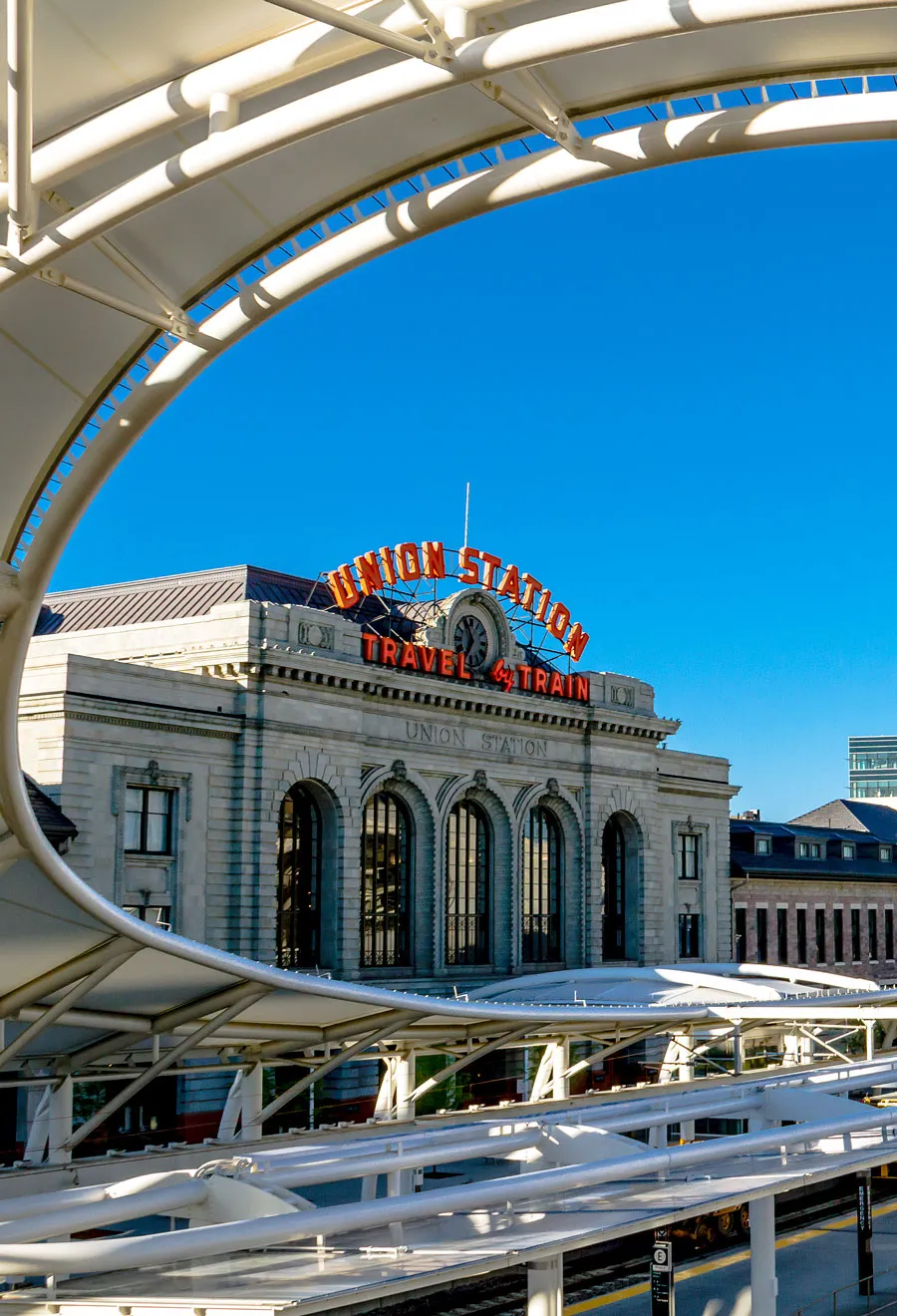During the golden age of rail travel, trains were the ultimate form of luxury transportation, outfitted with plush furnishings, sleeping cars, and dining amenities. At the time, boarding a train was the most desirable way to see the country. And it was fitting for a train station to match the elegance of its cars, with over-the-top architecture that oozed opulence. Although train travel isn’t as grand as it once was, these 10 Amtrak stations remain as beautiful as ever.
Union Station – Washington, D.C.

At the turn of the 20th century, architect Daniel Burnham was tasked with designing a station worthy of our nation’s capital. The end result was Washington, D.C.’s Union Station, a magnificent building that combined classical Roman architecture with the popular Beaux Arts style of the time. Burnham was particularly inspired by the size, scale, and vaulted ceilings of Roman bathhouses. Built in 1907 during the City Beautiful movement, a nationwide urban planning reform led by architects and landscape designers, Union Station remains one of the most elegant train stations in the country.
The original station featured a Presidential Suite that was often employed by elite travelers and dignitaries, including President William Howard Taft and Queen Elizabeth II. Although the Presidential Suite no longer serves its intended purpose (it is now available as a venue to rent), D.C.’s Union Station continues to host 40 million travelers annually.
William H. Gray III 30th Street Station – Philadelphia, Pennsylvania

Philadelphia’s 30th Street Station was built during the Great Depression, but it is no less grand despite being constructed under difficult circumstances. The Beaux Arts style can be found in the massive exterior columns and interior coffered ceilings, while art deco is reflected in the vertical lines, symmetrical proportions, and geometric details.
At one time, 30th Street Station was one of the most important railway stations in the country, especially during World War II, when it served as a hub for departing soldiers. This history is memorialized by an interior bronze sculpture of an angel lifting a fallen soldier, bearing the names of the 1,307 railroad employees who died in the war. Much of the station’s original build remains intact, although the famous flipping departure board was replaced in 2019. The original is currently on display at the Railroad Museum of Pennsylvania in nearby Strasburg.
Cincinnati Union Terminal – Cincinnati, Ohio
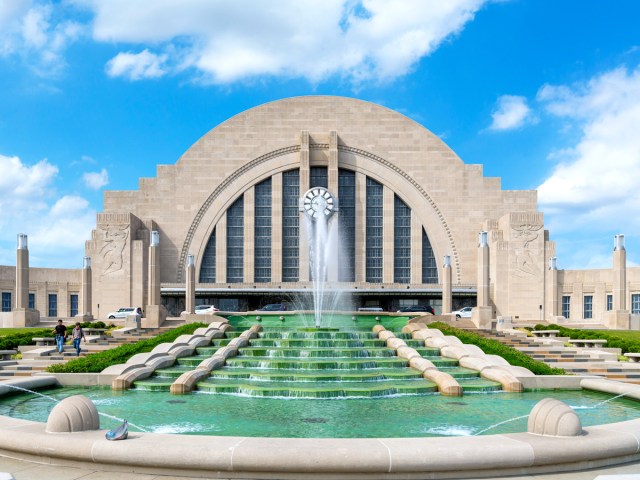
A masterpiece in the art deco style, Cincinnati Union Terminal is regarded as one of the last great American train stations. Before it was built in 1933, the train network in Cincinnati was highly inefficient, with tracks scattered across the city. To amend the situation, the city hired an architectural firm to create a magnificent railway station that housed seven different railways in one location.
The building’s standout feature is a 180-foot-wide half-dome, one of the largest in the Western Hemisphere. Other ornate details include mosaic art, marble floors, and bas-relief sculptures depicting transportation scenes. Although it no longer has tens of thousands of daily passengers like it did in its heyday in the 1940s, Union Station offers continued Amtrak service, two museums, and a theater.
Los Angeles Union Station – Los Angeles, California
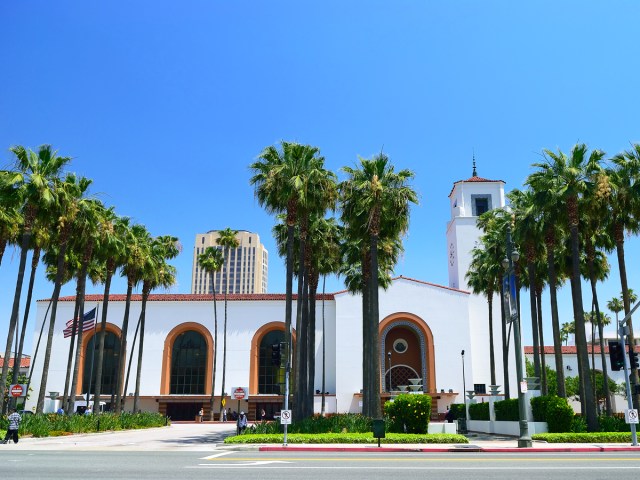
Plans for a single L.A. train station were in the works for nearly 30 years before Los Angeles Union Station finally opened its doors in 1939. At the time of its opening, the grand station offered consolidated railway service for three separate railways and cost a cool $11 million (about $240 million today). Designed in art deco, Mission Revival, and Spanish Colonial styles, the L.A. train station effortlessly blends California’s classic architectural aesthetics.
In the 1980s, the train station was renovated for Amtrak service, and great care was taken to keep the historical design intact. Today, Union Station still features red clay tile roofs, white stucco walls, wooden beams, and decorative chandeliers. Visible from a distance, the Mission-style Grand Bell Tower continues to be a key feature in the architectural design and a historic L.A. landmark.
Kansas City Union Station – Kansas City, Missouri
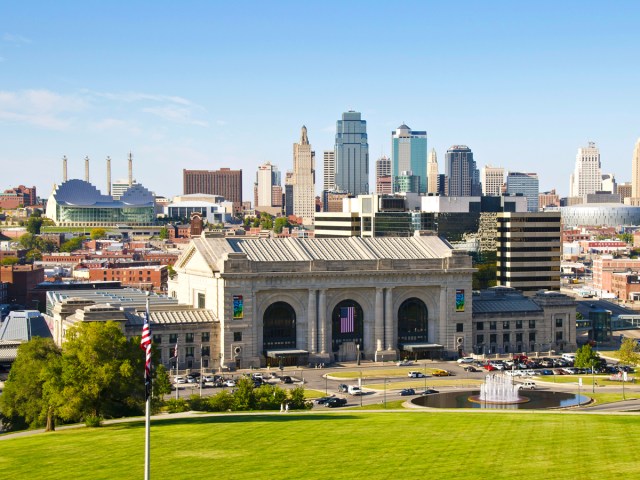
At the turn of the century, Kansas City was a bustling Midwestern city and a crucial stop in the transcontinental railway system. Officials realized that a centralized railway station would streamline the shipping of goods across the country and boost Kansas City’s economy as well. After over a decade of planning and building, Union Station opened in 1914 as the second-largest train station in the country at the time. By 1945, it handled a record 678,363 passengers annually, thanks largely to World War II.
Designed in the Beaux Arts architectural style, the train station has an imposing exterior with columns, arched windows, and a limestone facade. Inside, the focal point is the Great Hall, a massive room measuring 36,000 square feet. Hanging from intricately coffered ceilings are three chandeliers that are 12 feet in diameter and each weigh approximately 3,500 pounds. Along with the Amtrak station, the historic building is home to a science museum and planetarium.
Santa Fe Depot – San Diego, California
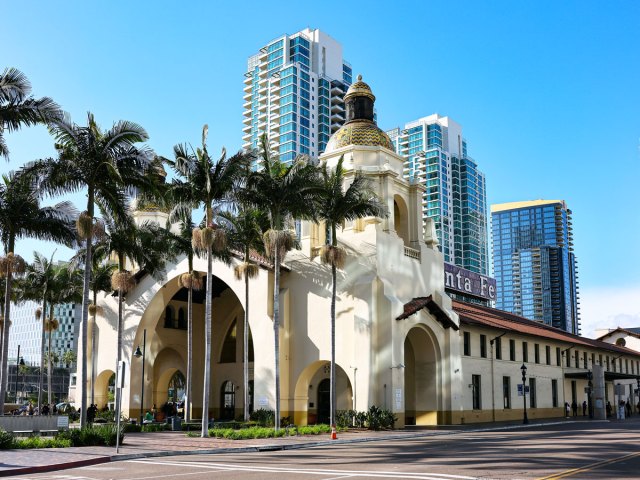
San Diego’s Union Station was built in 1915 to replace the city’s first railway station. Originally known as the Santa Fe Depot, the station was the southernmost railroad terminus in California and part of the Atchison, Topeka, and Santa Fe Railway, a network of railways that linked the Midwest to the West. The brainchild of San Francisco architects Bakewell and Brown, who also designed San Francisco City Hall, Santa Fe Depot was inspired by Spanish and Mission Revival styles, with Mission-style archways, stuccoed walls, and matching twin bell towers reminiscent of Moorish design.
Although it was almost destroyed in 1972 due to disrepair, the historic train depot was ultimately saved from being razed and eventually added to the National Historic Register. Many of its original designs can be found in the Amtrak station, including the inscribed blue and yellow tile, historic ticket counters, and century-old benches. Built in the center of downtown, the train station is still an active hub for travelers, connecting to the city’s trolley and bus system.
Union Station – Chicago, Illinois

It took about a decade to complete Chicago’s Union Station, but it was well worth the wait. After delays brought on by World War I, the gorgeous train station finally opened its doors in 1925. The brainchild of a group of prominent architects, the station was built to accommodate four railroads that passed through this centralized Midwestern hub.
Designed in the Beaux Arts style, Union Station’s limestone exterior, marble interior, and decorative moldings contribute to its grandeur. The building’s 115-foot-high coffered ceiling was built of translucent glass, allowing natural light to brighten up the Great Hall. When construction halted during the war, the ceiling was blacked out to avoid potential attack from enemy aircrafts. As of late, the Amtrak station’s renovations have added several modern comforts to the historical design, including restaurants, retail spaces, and up-to-date accessibility features.
Moynihan Train Hall – New York, New York

Located across the street from Penn Station, one of the busiest transport hubs in the world, Moynihan Train Hall combines modern design and historic architecture. The expanded Amtrak station — housed in the historic James A. Farley Post Office Building — opened to the public in 2021. The Beaux Arts building it occupies dates back to 1912 and is famous for its symmetrical Corinthian columns that run the length of its exterior.
The western half of the post office was expanded upon to create Moynihan Train Hall, which serves as New York City’s Amtrak station. The sleek station provides modern comforts for train travelers, including a full-service metropolitan lounge with a bar and restaurant. The central 92-foot-high skylight allows natural light to penetrate the space, while the design incorporates the steel trusses originally used in the Farley Post Office Building.
Union Station – Denver, Colorado

Although the railroad first came to Colorado in 1870, it wasn’t until 1881 that Denver’s original Union Station was constructed. After a chandelier fire partially destroyed the new station, it was subsequently replaced by a grand Romanesque Revival building. In 1914, the train depot was rebuilt a third time to reflect a more modern style for the time, with architects designing a brand-new, three-story Beaux Arts marble building sandwiched between the original Romanesque wings.
It’s this version of Union Station that still stands today. The building features intricate original details, such as a carved motif of Colorado’s state flower in the Great Hall, towering clocks, and a few of the original ticket windows. Its prominent “Travel by Train” sign was added in the 1950s, a marketing ploy to boost sales when train travel was on the decline. Today, the iconic station is home to regular Amtrak service, in addition to restaurants, shops, and hotel accommodations.
Union Station – Worcester, Massachusetts

After a fire destroyed Worcester’s original train station in 1911, the city rebuilt a new Union Station within a year. Combining Beaux Arts and Spanish Revival elements, the building’s architecture was intended to impress. And it worked — Union Station was considered one of the most beautiful buildings in the state of Massachusetts at the time of its completion. Its most renowned architectural feature was the set of twin towers encased in white marble, which eventually had to be taken down due to the vibration of the trains leading to structural instability.
Union Station sadly fell into disrepair in the 1970s, but extensive renovations in the late 1990s brought it back to its full glory. Today, train travelers continue to enjoy the building’s stained glass ceiling, exquisite marble flooring, and mahogany trim. Best of all, the twin towers were rebuilt using modern materials that allowed them to withstand the station’s oscillations.
Editor’s note: This story was updated and expanded with additional content.
More from our network
Daily Passport is part of Inbox Studio, which publishes content that uplifts, informs, and inspires.






